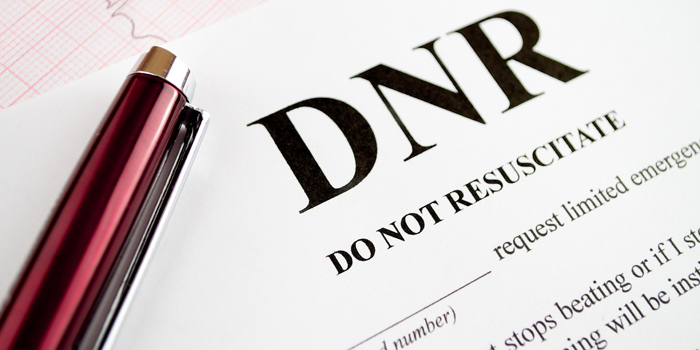For example, a Do-Not-Resuscitate (DNR) order is a written document with instructions informing healthcare personnel not to perform cardiopulmonary resuscitation (CPR). Many patients don’t completely understand what a DNR order is and its application to their medical care. The DNR is a legally binding order signed by a physician at a patient’s request that lets medical professionals know you don’t want to be resuscitated.
The only time CPR is performed is when a patient is non-responsive, is not breathing and does not have a pulse. When this situation occurs, medical personnel have two directions they can go; one is to allow a natural death; the other is to try CPR.
Patients should know the limits of a DNR order. It ONLY applies in a situation described above where the patient is not breathing and does not have a pulse. It does not mean that a patient cannot be treated any differently that another patient who does not have a DNR in place.
CPR is successful in only about 20 percent of the cases. Medically complex or frail patients have even lower levels of success. Successful CPR recovery only means that someone regained a pulse. It does not have any relationship to the cognitive or mental status of the patient after CPR is administered.
It is, of course, important to fully understand and execute a DNR when there is no pressure from a medical emergency. It should be coupled with an “Advance Care Directive” (sometimes called a “Patient Advocate Designation”) that allows you to appoint someone you trust to speak on your behalf. This is in addition to a “Healthcare Power of Attorney”. Use an eldercare attorney who specializes in such matters to execute these documents for you. You can locate models of such documents online, but it is best to confirm with an attorney that they conform to the laws of your state.
You should discuss these sensitive matters and signing a DNR when no one’s under pressure from a medical emergency. You may want to ask your physician “What is the likelihood that I would survive or recover if I needed CPR?”

